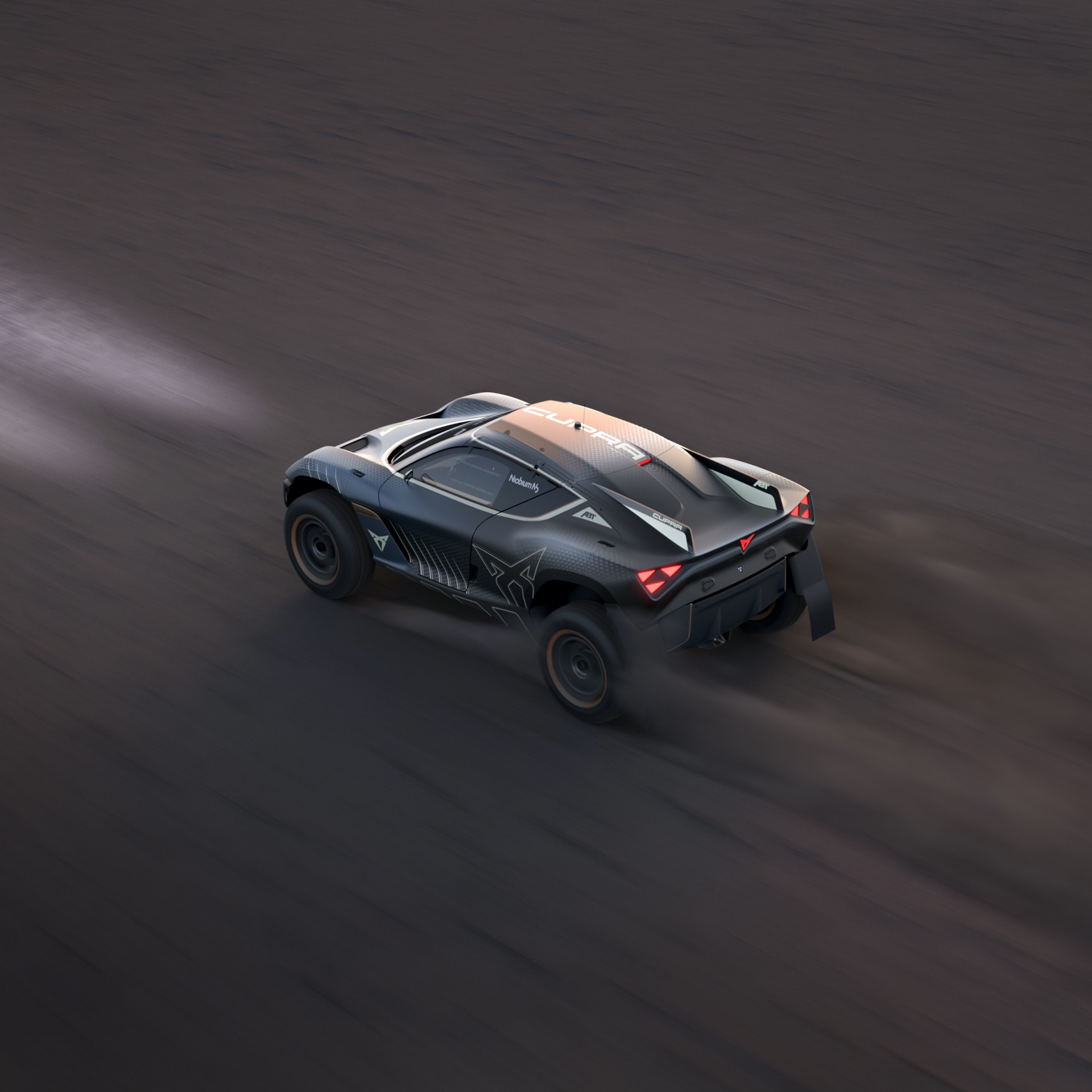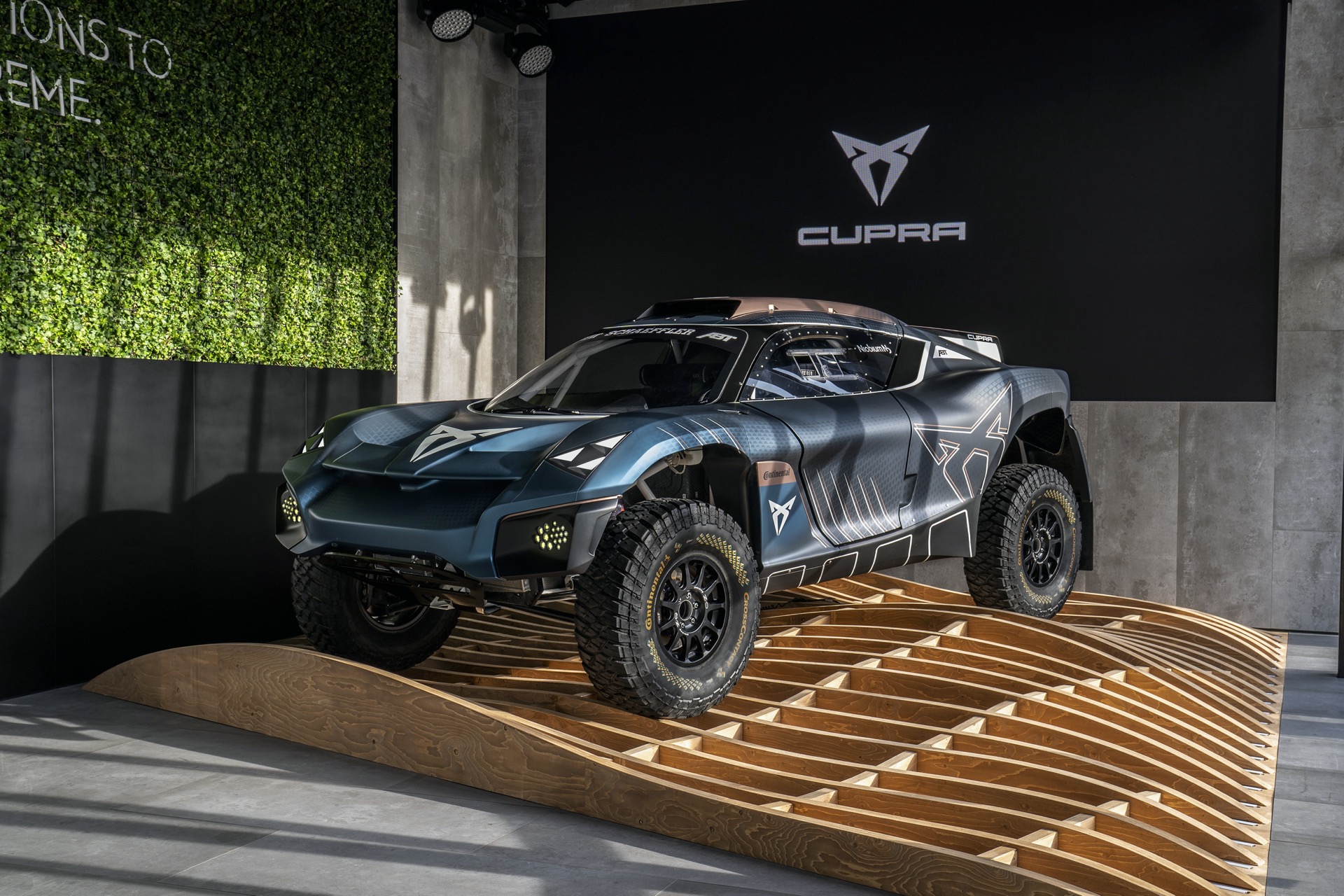The Cupra Tavascan Extreme E Concept has been unveiled at the IAA Mobility 2021 Munich Motor Show. The all-electric vehicle is a product of a collaboration with ABT Sportsline, and will Debut in the experimental Extreme E off-road racing series in the near future.
The Tavascan previews sustainable manufacturing processes, with engineers using natural material in its construction. Instead of using carbon fiber that is commonly found on lightweight racing cars, the Extreme E concept uses flax fibers from the flax plant. Cupra says that it’s a technology that can easily be adapted to production vehicles, with no tradeoff.
The concept is constructed of multiple 3D printed parts too, which includes the vehicle’s frame. By using 3D printing, the lead time for the manufacturer of replacement parts is said to drop drastically. Another benefit is that components can be modified quickly without the need for cumbersome and expensive tooling.
See: Cupra UrbanRebel Is A Small EV Destined For 2025
Powering the Tavascan concept is a rear-mounted 54-kWh battery, and the concept can go from 0-62 mph (0-100 km/h) in about 4 seconds. It’s been built in partnership with ABT Sportsline, which has been a key supplier to Formula E, as well as fielding the Audi Sport team in the electric series.
“The Cupra Tavascan Extreme E Concept is the next evolution of our all-electric off-road racing car with even more Cupra DNA and a design hints at the brand’s future direction. But it also delivers technical advancement too” said the Head of Technical Development at CUPRA Racing Xavi Serra.
The concept itself is also said to preview an upcoming Tavascan electric road car, set for production sometime in 2024. Based on the VW group’s MEB platform, a road-going Tavascan will share little with this concept mechanically, however, elements of the design may carry over. An earlier Tavascan Concept packed two electric motors at the front and another one at the rear. Its total system output of 302 HP (306 PS / 225 kW) enabled a 0-62 mph (0-100 km/h) of 6.5 seconds.













